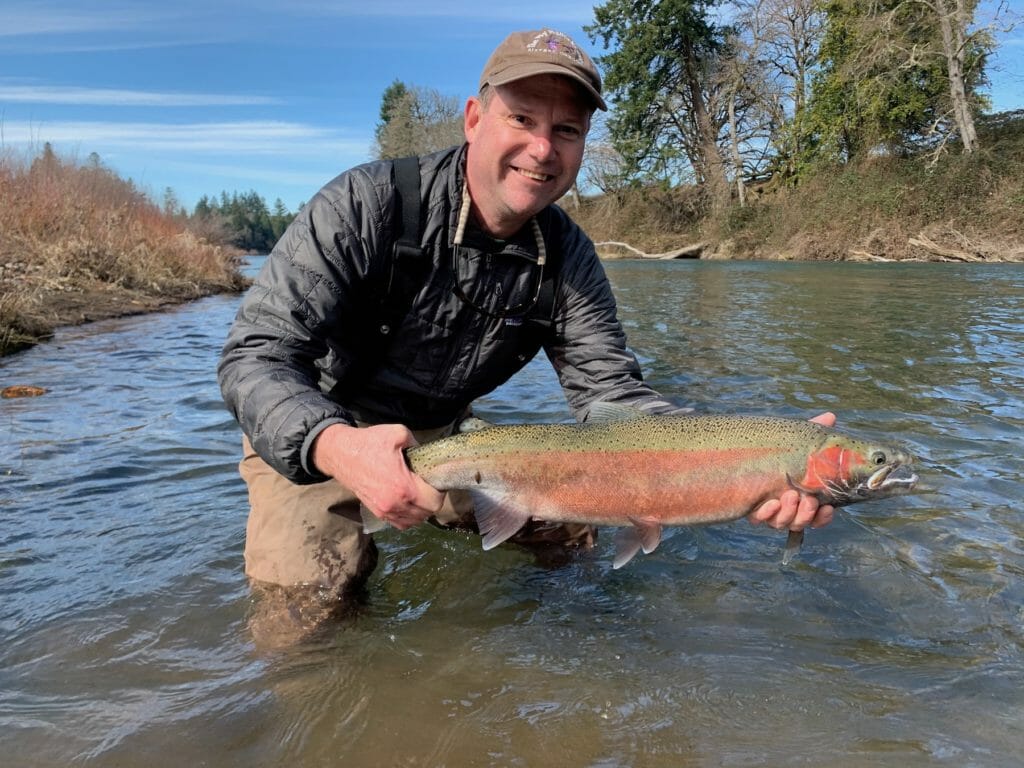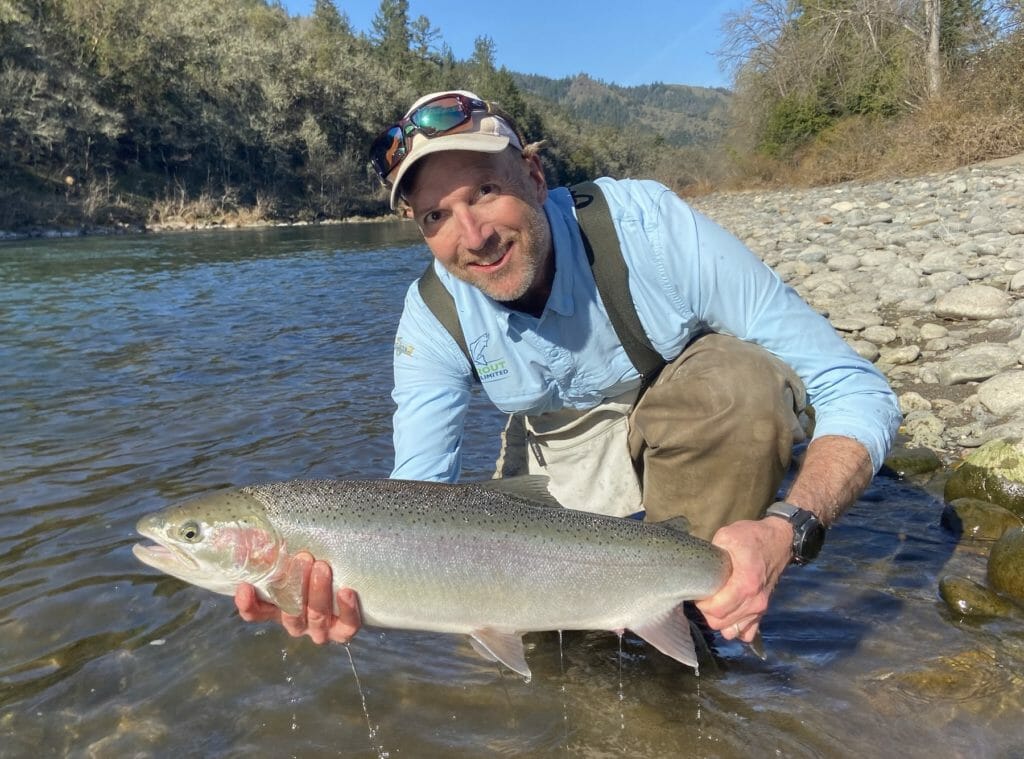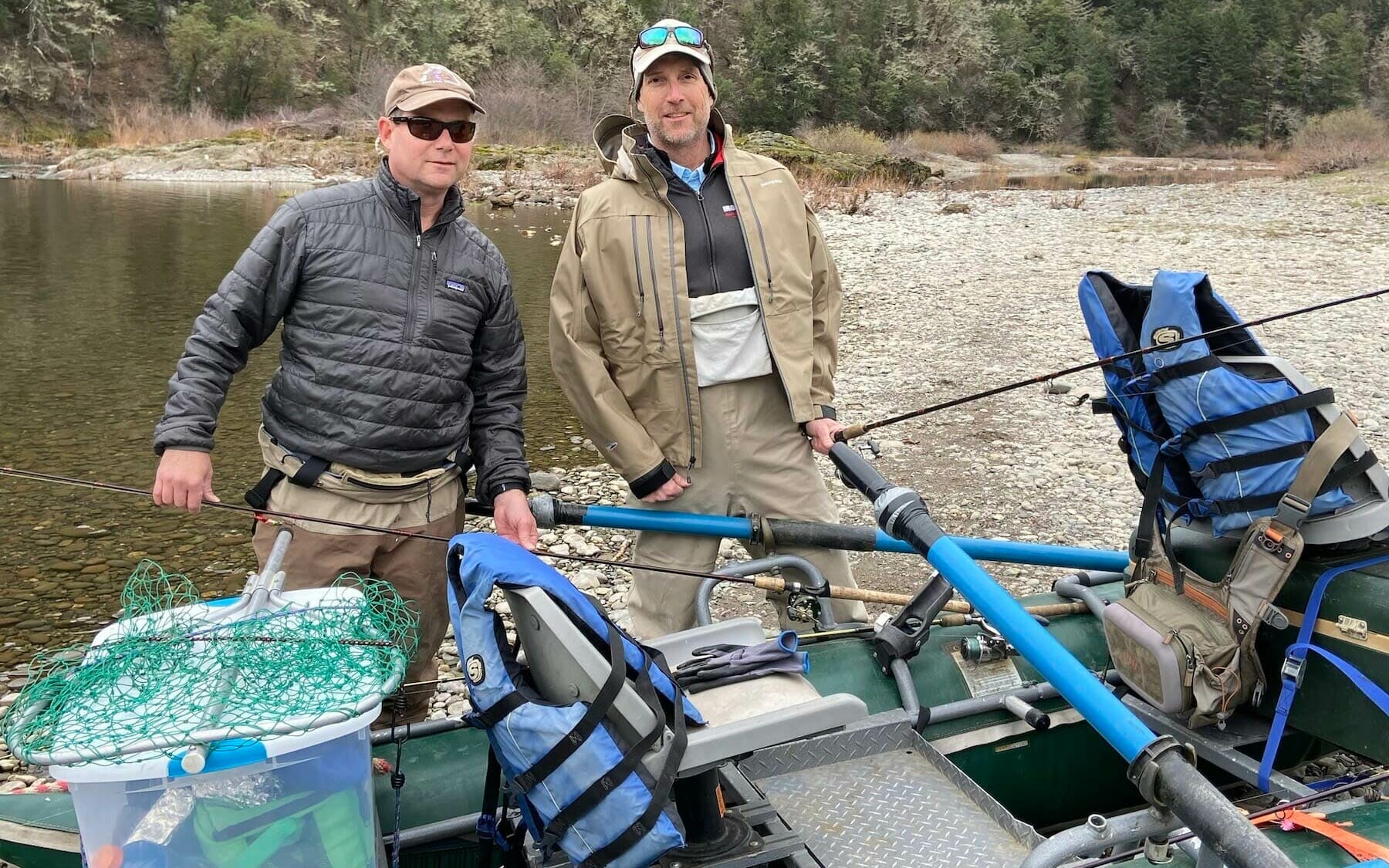As the old Toyota truck bounced over the river rocks and headed toward the water I couldn’t help smiling to myself.
My brother and I sat together in the cab, our dad behind the wheel. He was dropping us at the river for a day fishing, like so many times before.
“You guys be careful,” he said, just like always. “Use good judgement.”
I smiled again. That was always the message when we were teenagers and he’d drop us at the river or a pond. And it’s still the message nearly 40 years later.
I had traveled out to my hometown of Myrtle Creek in Southern Oregon to visit the folks, a trip timed not coincidentally to fall during prime winter steelhead fishing season.
A lot of folks use “home river” to describe water they fish often. The south fork of the Umpqua — the South Umpqua — is more to us. It passes about 200 yards from the house where we grew up. When I was in second grade it actually passed through our house during a flood.
The folks moved out of that house 34 years ago but still live nearby. So, when Greg and I decided to float the home stretch, it was as easy as having Dad drop us at the put-in at a place called Lawson Bar, not far from the little town of Canyonville.
“I’ll call you when we’re 20 minutes from the take-out,” I said.
Shuttles don’t get any easier.
Usually, the float from Lawson Bar to the railroad trestle in Myrtle Creek is crowded in early March. One day last winter Dad counted 20 boat trailers at the take-out.
On this day, we saw that there wasn’t a single trailer at the take-out as we drove past. Lawson Bar, usually buzzing with activity on any early March morning, was completely deserted.
The lack of crowds had nothing to do with the COVID-19 pandemic, which was in its infancy in the U.S. It had a lot to do with a lack of rain.

The river was amazingly low and clear. Fishing had been challenging, in part because of conditions but also because the Umpqua system, which has both wild and hatchery steelhead, didn’t seem to have good fish numbers this winter like in years past. (Please visit TU’s Wild Steelheaders United to join our efforts to protect and restore these amazing fish.)
Also importantly, the float requires passage through a spot known as Weaver Rapids, a place where many drift boats and several lives have been lost. While it’s tough at good water levels, it’s pretty much impassable in a drift boat at low water.
Fortunately, we would be in Dad and Greg’s small, maneuverable and well-worn Outcast PAC 1200 cataraft.
We came prepared for a variety of presentations, with fly rods for swinging or indicator fishing and conventional tackle for bobber dogging, side drifting or pulling plugs.
Shortly after launching we slid into a run that looked perfect for plugs. We let out line and I watched with satisfaction as the tip of my rod started pulsing. Greg’s plug wasn’t running well, though. We’d sized down because of the low water — small plugs with single, de-barbed treble hooks — and his plug was too small to run well on even 10-pound mono.
I wedged my rod butt under my leg and started to reel in for Greg, who was on the oars. Suddenly my drag started screaming.
“Fish!”
The steelhead was pretty small, a hen of about 4 pounds. The adipose was intact so she quickly went back into the run after a picture.
It was a good start.
We rotated among tactics as we made our way downstream over the next few hours. Flies and side-drifting drew blanks. Twice more plugs drew interest. We were patient and didn’t set the hook too early — a must when pulling plugs — but the fish still didn’t get buttoned.
I was taking a turn on the sticks when we got to Weaver Rapids. Greg is by far the more experienced boat handler but he gulped and trusted me. We made it through with only one “Oh, sh**!” moment when I slightly overshot a narrow chute.
Fishing action slowed. The sun came out.
“We’re on the river on a 65-degree day in early March,” Greg said. “Who needs fish?”
He had a point, but fish are nice.
We were working the plugs down a juicy run not far from that small home where we grew up when my rod tip bounced twice and then the rod doubled.
“Big wild fish!” Greg said when the steelhead made the first of four acrobatic jumps.

I’m pretty sure he was more excited than I was when he slid the net under the 30-inch hen five minutes later.
“Can you believe this?” he said, laughing after the release.
There was one more good run before the takeout. It was a spot we knew well because it was just a quarter mile from our old neighborhood, and we’d spent many hours there fishing for smallmouth bass in the summer when the river is lower, warm and wadeable.
Sure enough, halfway down the run Greg’s plug rod bounced.
“Ahhhh….” he hissed, willing the fish to come back.
It didn’t.
Thirty minutes later we were pulling to the bank as Dad drove down to meet us.
And that’s when a little twinge of regret hit me.
In the old days he would have immediately asked, “How did it go?”
But I had been so excited about our fish that I’d sent him pictures from the river in real-time.
So instead the question we got was, “Just those two?”
I’ll more than likely be back there in a year and I hope we can do the home float again. Maybe we’ll catch fish. Maybe we won’t.
Whatever happens, Dad won’t find out until he gets there to pick us up. I’m pretty sure he’ll like it that way, too.
Mark Taylor is Trout Unlimited’s eastern communications director. He lives in Roanoke, Va., about 3,000 miles from where he grew up on the banks of the South Umpqua River.



